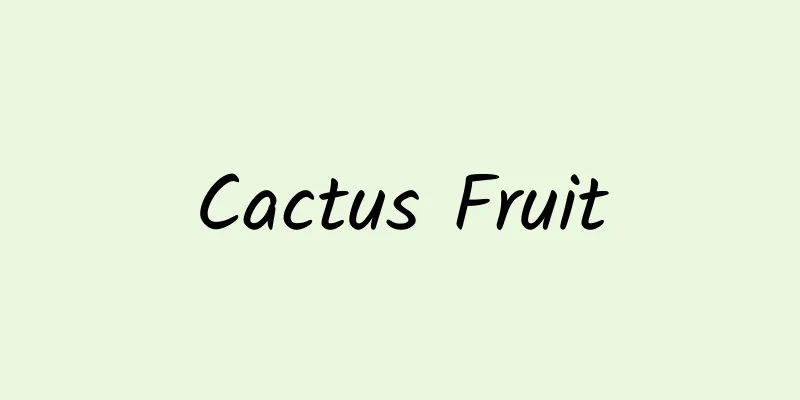The efficacy and function of magnolia

|
Maogua is a common Chinese medicinal material with great health-care effects. It also has certain effects on some diseases. We need to choose according to our own needs. Many people in our daily life don’t know much about Maogua, so let’s analyze Maogua below. [Other names] Detoxification grass, mouse melon, mountain bear bile, golden loofah, mouse cucumber, mouse cantaloupe, dog cucumber, silver silk lotus, wild cucumber, mouse-pulled winter melon, large mouse-pulled winter melon, sky melon, mouse melon, small bitter melon, king melon, earth melon, wild melon, mountain melon, milk, wave melon, dog shit melon, chicken cucumber [Source] Medicinal material source: The tuberous root of the Cucurbitaceae plant Glehnia littoralis. [Original form] A climbing herb. The tuber is spindle-shaped, with a diameter of 1.5-2cm. The stems and branches are weak, glabrous, and grooved. The petiole is slender and short, initially covered with short yellow hairs which gradually fall off. The leaves are thin papery, polymorphic, enlarged, ovate, oblong, ovate-triangular or halberd-shaped, undivided or 3-5 shallowly to deeply lobed, with lobes oblong-lanceolate or triangular, 8-12cm long, 1-5cm wide, dark green above, slightly rough, with fine pubescence on the veins, gray-green below, with raised veins and almost glabrous. Tendrils slender, unbranched. Dioecious; 10-20 male flowers born at the top of 2-5mm long peduncles, in umbel inflorescence; flowers very small, pedicels slender, calyx tube bell-shaped, base round, outside glabrous, flower yellow, outside covered with short soft hairs, lobes spreading, triangular, 3 stamens, separate, born at the base of filaments, filaments slender, with hairs; female flowers solitary in leaf axils, covered with fine soft hairs, ovary ovate, 2.5-3.5mm long, 2-3mm in diameter, glabrous or covered with yellow-brown hairs, 3 stigmas. The fruit is reddish brown, oblong or nearly spherical, 2-6cm long, 2-5cm in diameter, and has a smooth surface. There are several bracelets, which are grayish white, nearly spherical or obovate, 5-7mm long, with flat edges and a smooth, hairless surface. The flowering period is from May to August, and the fruiting period is from August to November. [Habitat distribution] Ecological environment: It often grows on hillside roadsides, under forests, in mixed woods or in thickets at an altitude of 600-2600m. [Properties] Identification of properties: The tuber is spindle-shaped or spindle-cylindrical, 10-15cm long, 0.8-2cm in diameter, and sometimes branched at the bottom. The surface is yellow-brown or reddish-brown, relatively smooth, and has numerous nearly elliptical horizontal protrusions. The cross section is floury or slightly fibrous. It has a faint smell and a light, slightly bitter taste. [Chemical composition] The root tuber contains ketones, acids, steroids, lignoceric acid, tricosanoic acid and behenic acid, △7-stigmastenol, calebassine B, citrulline, arginine, lysine, γ-aminobutyric acid, aspartic acid, glutamic acid, etc. It also contains inorganic elements such as potassium, magnesium, calcium, phosphorus, barium, titanium, manganese, cobalt, chromium, copper, nickel, strontium and zinc. [Pharmacological action] The median lethal dose of a single oral infusion of the root tuber to mice is 10.8 g (raw drug)/kg. The toxicity was not significantly reduced after heating, and the median lethal dose was 11.5 g (raw drug)/kg. 【Nature and flavor】 Sweet; bitter; slightly astringent; cold and toxic 【Entry into Meridians】Enters the lung, liver, spleen meridians 【Functions and indications】 Clears away heat and detoxifies; resolves blood stasis and dissipates stagnation; resolves phlegm and removes dampness. It is used to treat sores, carbuncle, swelling and poison; burns and fire; lung abscess cough; sore throat; edema and abdominal distension; diarrhea; dysentery; jaundice due to alcohol; eczema; rheumatic pain [Usage and Dosage] For oral use: decoct in water, 15-30g, or grind into powder; or soak in wine. For external use: take appropriate amount and mash fresh product for application. 【Note】 Patients with cold diseases and pregnant women should take it with caution. 【Excerpt】 Chinese Materia Medica As a common Chinese medicinal material, Maogua is often forgotten by people. In fact, its effects and functions are beyond your imagination. As long as you are good at eating it and use the right method, I believe it will be of great help to your body. |
<<: The efficacy and function of horsetail grass
>>: The efficacy and function of hairy thrush
Recommend
The efficacy and function of duck-foot umbrella
Chinese medicinal materials are very common, and ...
Traditional Chinese medicine treatment method for cervical spondylosis
Cervical spondylosis may cause great pain to our ...
Yellow warning! Heavy to severe snow in parts of Liaoning and Jilin, heavy snow in some areas, please take precautions against cold and slipping
Yesterday (January 26), some areas in Liaoning an...
The efficacy and function of croaker
The bream is a relatively familiar traditional Ch...
She cultivated a virus to cure her own cancer. Can “self-experimentation” promote scientific progress?
In 2020, Beata Halasi's breast cancer recurre...
The efficacy and function of Primula hupensis
With the development of society and the close int...
The efficacy and function of Veronica multiflora
Many people choose Veronica persica because of it...
The efficacy and function of sword bean shell
Do you know sword bean shell? It is a common Chin...
Can anti-blue light glasses protect your eyes and prevent myopia? Attention! Not everyone is suitable for wearing them...
Expert of this article: Li Zongou, Master of Opht...
The efficacy and function of plantain[picture]
Plantain [picture] is a famous traditional Chines...
Why do nutrition experts recommend you to eat this kind of food with "high calorie content"?
Cheese, cheese, yogurt... these foods you have ea...
How to eat fresh Dendrobium candidum
Everyone knows that the growing environment of De...









